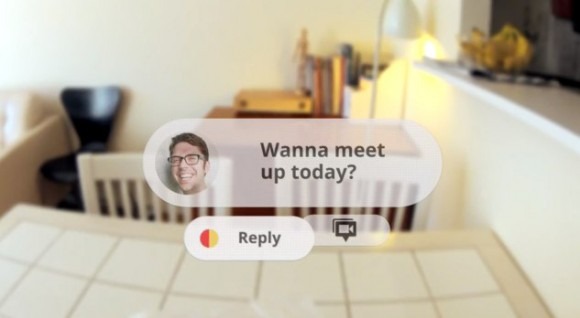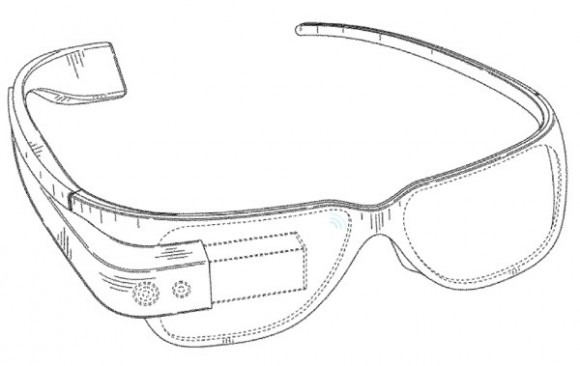Google Admits Project Glass UI Falls Well Short Of Promo Video
Google has admitted that the view through its Project Glass wearable computer won't quite be the Terminator-style augmented reality that its eye-catching demo video initially suggested. Rather than full-view overlays of context-based information and buttons, a Google spokesperson confirmed to CNET, Project Glass' display will hover in the wearer's vision "about where the edge of an umbrella might be." Meanwhile, there's news from the patent office about the physical design of the headset.
In the demo – a frame from which is shown below – Google suggested Project Glass wearers could expect a heavily augmented view of their world, with full color graphics adding navigational guides, video conferencing and more directly in the line of sight. What now appears to be the reality is a far more conservative mediation.

"It's still too early to know what the functions and UI will be," the Google spokesperson said, but commented that among those who have been trialling Project Glass, it's the "simple interactions that are making people the most excited." That's presumably things like discrete navigation directions hovering just above the line-of-sight, and notifications for new messages on a paired smartphone.
As we discovered with Lumus' wearable display, bright external environments don't necessarily play well with head-mounted screens. Instead, simple wireframe UIs are more usable, if less instantly impressive.
Meanwhile, Google has patented the design of the Project Glass prototype, with a trio of USPTO filings (1, 2 and 3) spotted by Engadget. The diagrams show for the first time Google's intended version of Project Glass for those who need prescription lenses – so far we've only seen the lens-free variant, as shown in the first image above – as well as the swollen right arm which presumably helps accommodate the battery and other related hardware.

Reducing the amount of visual clutter from Project Glass is probably a sensible idea, given the likelihood that it could distract pedestrians and – altogether more dangerously – drivers from what was actually happening around them. Still, with nobody outside of Google being able to test the current prototypes, exactly what compromises that has forced in functionality remains to be seen.
